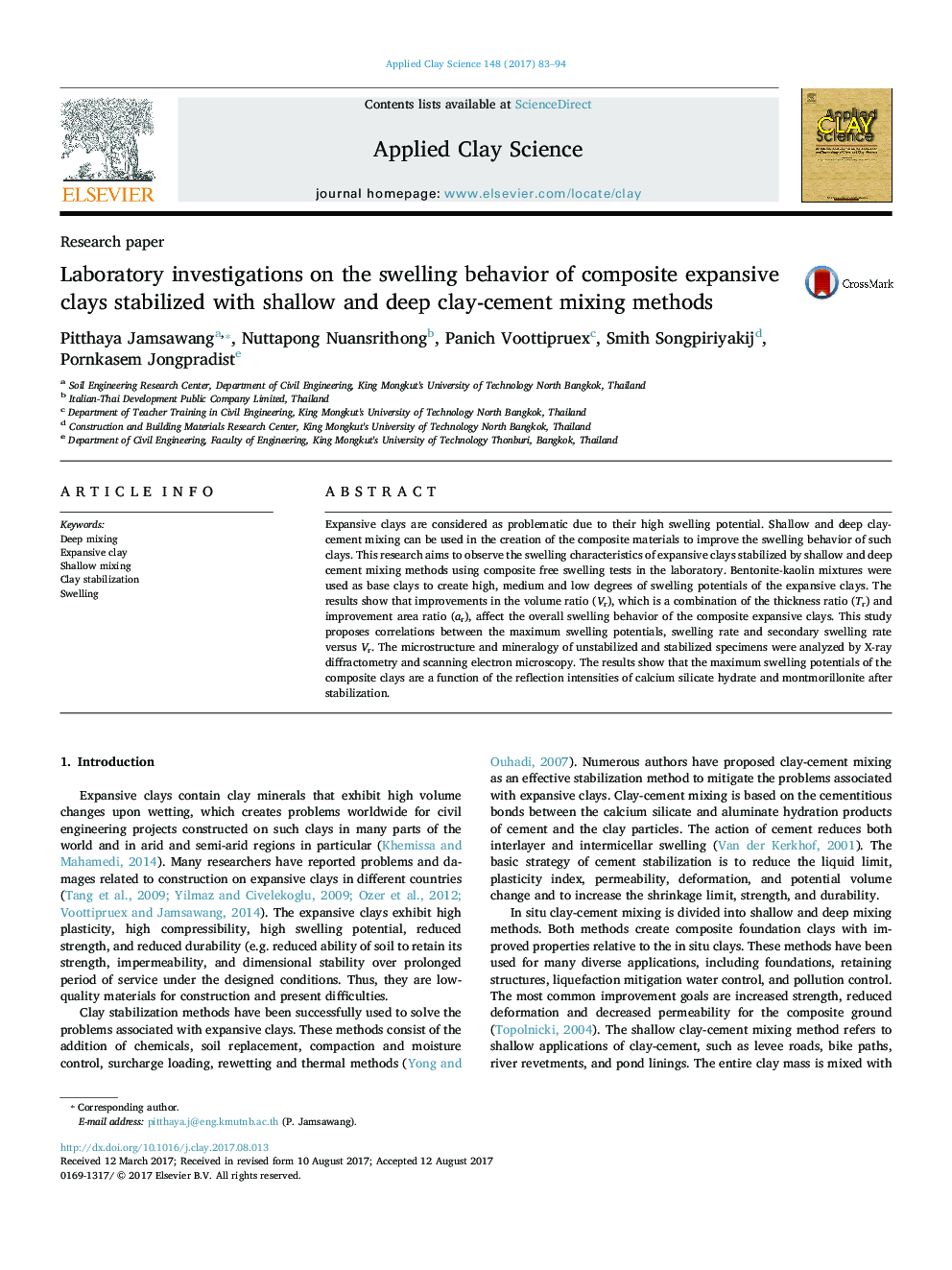| Article ID | Journal | Published Year | Pages | File Type |
|---|---|---|---|---|
| 5468529 | Applied Clay Science | 2017 | 12 Pages |
Abstract
Expansive clays are considered as problematic due to their high swelling potential. Shallow and deep clay-cement mixing can be used in the creation of the composite materials to improve the swelling behavior of such clays. This research aims to observe the swelling characteristics of expansive clays stabilized by shallow and deep cement mixing methods using composite free swelling tests in the laboratory. Bentonite-kaolin mixtures were used as base clays to create high, medium and low degrees of swelling potentials of the expansive clays. The results show that improvements in the volume ratio (Vr), which is a combination of the thickness ratio (Tr) and improvement area ratio (ar), affect the overall swelling behavior of the composite expansive clays. This study proposes correlations between the maximum swelling potentials, swelling rate and secondary swelling rate versus Vr. The microstructure and mineralogy of unstabilized and stabilized specimens were analyzed by X-ray diffractometry and scanning electron microscopy. The results show that the maximum swelling potentials of the composite clays are a function of the reflection intensities of calcium silicate hydrate and montmorillonite after stabilization.
Related Topics
Physical Sciences and Engineering
Earth and Planetary Sciences
Geochemistry and Petrology
Authors
Pitthaya Jamsawang, Nuttapong Nuansrithong, Panich Voottipruex, Smith Songpiriyakij, Pornkasem Jongpradist,
